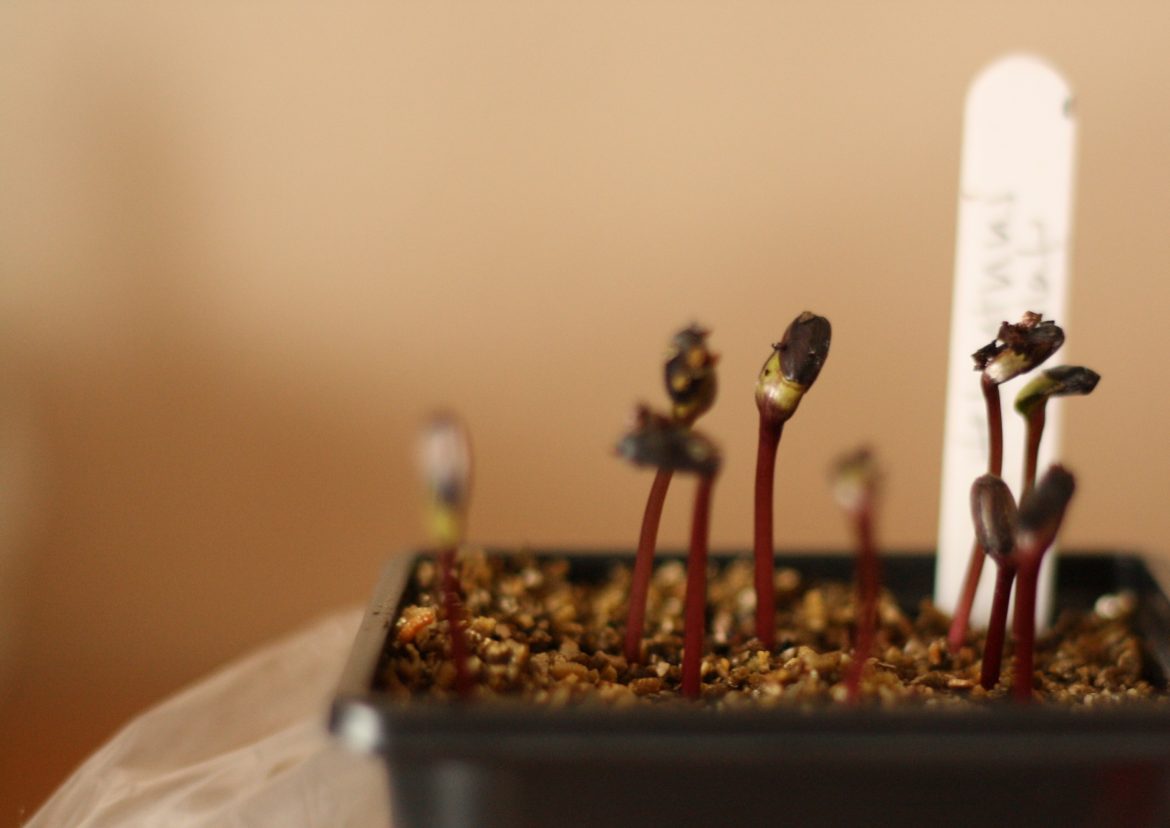Anna Taylor, owner of Anna’s Flower Farm in Audley End, shares what’s going on in the garden this month
So we have rested; truly rested, throughout another lockdown. With frozen or wet ground, we have had little else to do but reflect, recuperate, and hope, this winter. Now in February, to draw out the analogy a little further, it’s time to sow those seeds and look towards emerging and growing into the spring.
With light levels rising, there is a tantalising glimpse of what’s to come. The ground remains very cold and the air still, so take it easy. If you haven’t already, have a good think about what you want to grow this year, begin to plan your growing and order accordingly. I like to turn to Vital Seeds, Chiltern, Real Seeds and Great Dixter for my vegetable and flower seeds.
Once you have your seeds, sort them out into piles – those to sow indoors or direct (we’ll come to that next month), those that are hardy and those that are not. Right now, you only want to be starting off a hardy seed under cover. Half-hardy seeds cannot survive low temperatures, so hold off sowing these until late next month.
Anyone that has a windowsill available to them and a spot for a pot outside can sow something to flower or eat – or both! Before I had a polytunnel or greenhouse, I used to grow on my narrow windowsills – with no room for trays, I could fit about 50 smallish square pots snugly along my windows. We face east-west and had about the same germination rate on either side of the house. This was – and still is with tricky seeds – my fail-safe germination spot. You must use seed-sowing compost: it is lighter, with sieved fine compost for those young roots, open for air and water and only slowly releases food.
Seeds need moisture, warmth and light to grow, so give them these and you’re on your way. Fill the pots with compost, don’t press down too firmly and sit the pots in a tray of water until the compost moistens. Then sprinkle just a few seeds on the surface and dust with compost (check the packet first as some seeds shouldn’t be covered at all).
I tend to cover these with a clear bag, clingfilm or a vegetable tray. You want to keep the moisture in and the soil warm to trigger germination. As soon as you see growth, remove the cover and allow the seedling to ‘grow on’. Don’t sow too many seeds as they’re likely to compete, and this doesn’t make for strong plants. For that, keep the plants in good light and turn the pot regularly so that they grow straight.
Transplant these seedlings when you see two ‘true leaves’ (not the first set, the following ones). Gently tease the plant out and make sure to hold on to the leaf, not the stem, then ease into small, celled trays of multipurpose compost (there’s more on how to keep growing seedlings in March).
I’m so grateful to have a garden and, as I begin to sow my seeds, I know growing offers me some structure for spring in a year that is sure to prove challenging. I haven’t met a single person that isn’t enchanted when they grow something for the first time. To eat the fruit or enjoy the flower of a plant you sowed and nurtured is rewarding in such a precious way. And I know if nothing else right now, this time will come again. Go on. Try it with me this year!
Let Anna know how you’re getting on with your seed sowing on social media, or email [email protected]. For info on how to grow flowers from seed, plus seasonal handbooks, flower subscriptions and flower deliveries, visit annasflowerfarm.co.uk

